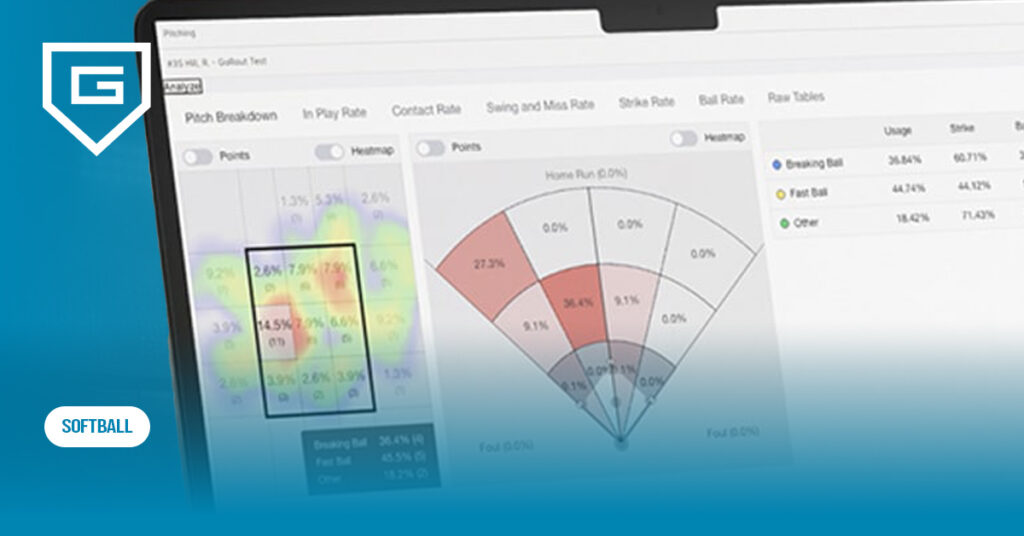What Is Sign Stealing in Football: Everything You Need to Know
Reading Time: 9 minutes
Reading Time: 9 minutes
As you know, football is a game of strategy. Coaches spend years developing their playbooks, players relentlessly practice running precise routes, and teams prepare for every possible scenario. However, sign stealing has been a hot topic of controversy and curiosity over the years.
What is sign stealing in football?
Teams often try to steal or decode opponents’ signs to gain an advantage. Some see it as part of the game’s chess match; others see it as unethical – or even illegal – depending on the method.
Sign stealing is happening now, especially at the collegiate level.
However, there is a solution.
Advanced football play-calling systems like GoRout help secure in-game communications and reduce the vulnerability of a team’s signs.
In this article, you will learn about the history, types and impact of sign stealing in football to understand how to protect your team’s communication on and off the field.
You will also learn how to use GoRout to streamline coach-to-player communication and prevent sign stealing to win more games.
The History of Sign Stealing in Football

Sign stealing in football goes back to the beginning of the game. Football teams have always used hand signals and verbal cues to communicate plays, inevitably creating the potential for opponents to decode them.
Sign stealing has been accepted as part of the game for decades. Football players and coaches relied on in-person scouting and experience to identify the tendencies and patterns of future opponents. One of the earliest reported cases of sign stealing was when sideline observers tried to decode football coaches’ play cards.
By the mid-20th century more complex offense and football defensive schemes were in place. Coaches started using decoy signals and codes to avoid play call detection.
Video technology came into play in the 80s and 90s as a more advanced form of sign stealing. Teams could record and analyze opponents’ sideline signals after games and replay them for more advanced scouting and video evidence of plays they would have to defend in the future.
The New England Patriots “Spygate” scandal in 2007 showed just how far a staff was willing to go to use video footage of opposing coaches’ signals to win games.
Today a coach-to-player communication system in helmets or through football wristbands limits the need for visible sideline signals to protect play calls from being discovered.
Types of Signs in College Football
College football signs keep the tempo of the game and bring complexity to a team’s strategy to minimize opponents ability to decipher them. Football signs should be quick and clear and vary by field position – offense, defense or special teams.
Offensive signs
Coaches use offense signs to call plays from the sideline to the quarterback and offensive players. They include gestures, picture boards or coded language to communicate specific football plays. Offensive signs tell players what routes to run, blocking schemes or audibles.
Defensive signs
Defense signs coordinate the defense by reacting to the opposing offense’s formation. Defensive coaches send signs to the whole team or specifically to the captain to relay to the rest of the defense. These signs call for defensive alignments, blitz packages and coverage schemes.
Special teams signs
Special teams signs are for the kickoff, punt, and field goal units. They call standard or trick plays, onside kicks and kick coverage schemes. The signs need to be quick and concise so everyone knows their role. A head coach may use hand, verbal, or decoy signals to keep opponents guessing.
Common Football Sign Stealing Techniques
Coaches and players use advanced scouting methods to decode opponents’ play calls and steal signals.
Visual observation
One old school method of sign stealing is in-person scouting and visual observation. Football team coaches or players on the sideline watch for patterns in hand signals, body language or play calling routines. Good observers can pick up tendencies during a game or identify patterns among a team’s signalling.
Video analysis
Video analysis is a more advanced method where teams record an opponent’s sideline during games to review their signals and plays. This practice is only legal in some forms for post-game review and advanced scouting of future opponents. The NFL and college football leagues prohibit teams from using video recordings to decode signals during a game or throughout the season. The film they review is of the field of play and their studies are limited to the plays that an opponent used in weeks prior to their matchup.
Pattern recognition
Teams can pick up on patterns in an opponent’s play calling throughout a game or season. Each coach or analyst studies games to find repetitive behaviors or signals that correspond to certain formations. These activities don’t always require technology but rely on film study and observation on game day.
Insider information
Sports teams also steal signs through insider information. Sometimes intentional and sometimes not. A good example is when a former head coach or player shares a team’s signaling system with their new team or practice plans are leaked.
The Ethics of Stealing Signs
Some coaches argue that sign stealing is part of the game. Observing and decoding an opponent’s signals is strategic. Those who know how to coach football well will tell you to adjust to an opponent’s tendencies. Those adjustments can be improved through reading their signals during games.
Many coaches, however, believe that underhanded methods—like technology or insider info—cross a moral line and are unfair. They are especially against alleged sign stealing from unauthorized means like video recording.
The rules and regulations on sign stealing differ by league. In the NFL, in-game observation of signals is allowed, but using video recording devices or technology to assist in stealing signs is explicitly prohibited.
College associations such as the NCAA prohibit any form of technology use to steal signs from the sideline. Any unauthorized sign-stealing results in an NCAA investigation.
The Impact of Football Sign Stealing on Game Strategy
Sign stealing can impact a team’s game plan by forcing the offense and defense to adjust to protect their play calls.
Offensive adjustments
When a team thinks their signs have been stolen, the coaching staff adjusts quickly to eliminate predictability. Teams rotate signals, use decoy sign callers or go no-huddle to limit the opponent’s opportunity to decode plays.
If a defense is believed to have decoded signals related to certain formations or specific route patterns, the offense may adjust to be more complex; mixing in motions or using different verbal cues at the line of scrimmage. Offensive coaches have previously practiced game plan changes during team football conditioning and practice.
Defensive adjustments
The defense may need to vary coverages, change alignments or disguise blitz packages to counter an offense’s reading of their signs.
If offensive players know about a blitz or specific coverage before the ball is snapped, the defense needs to adjust on the fly. A defensive coach has alternative game plans prepared and in place for those situations.
Special teams considerations
Special teams often have to adjust for trick plays, fake punts or onside kicks.
When an opponent is assumed to know a trick play is coming, a special teams coach may call an audible to back out of the play. Clear communication is key for a special teams unit. They have to get creative with their signaling to maintain the element of surprise.
Protecting Your Team’s Signs
Guarding your football team’s signs helps maintain the integrity of the game plan and prevents opponents from getting an unfair advantage.
Here are some ways to protect your signs:
- Complex sign systems: Create multi-layered sign systems with codes, symbols or gestures to make it harder for opponents to crack. Use different signs for the same play to confuse sign stealers.
- Dummy signs: Assign decoy sign callers to relay false information to the opponent. It makes it hard for the other team to determine which signs are real or decoys.
- Rotate signs: Change signs frequently throughout the game so the opponent can’t catch on. Alternate signers or use new gestures to create complexity.
- Implement technology: Use sports coaching technology to limit verbal or hand signals and reduce sign stealing in sports. These systems gives a coach a secure and direct line of communication to their players.
Recognizing Football Sign Stealing

Recognizing when your team’s signs are being compromised is key to winning games each week. Here are some signs to look for when your opponent is stealing your signs:
- Regular adjustments at the line of scrimmage
- Repeatedly well-timed blitzes
- Unusual anticipation on special teams
- Inconsistent execution on staple plays
Watch the opponent’s behavior on the field. They may have your signs if they react to your play calls simultaneously or adjust faster than usual.
Look for their defenders to anticipate the break in your team’s routes or blitz in response to an audible.
Countering Football Sign Stealing Attempts
In-game adjustments help get control of the game back after a signs are stolen. A coach has to be able to change up their play calling strategy mid-game. Adjust how plays are relayed from the sideline, speed up the tempo to reduce the time the opponent has to read your signs or use more complex decoy systems.
Have a backup sign system. Teams should have multiple signs and rotate through them during the game. Backup systems include different hand gestures, body signals, or separate personnel for calling plays.
Finally, use audibles and hand signals to counter sign stealing. Quarterbacks and defensive captains use audibles at the line of scrimmage to change the play based on the opponents formation or alignment. Verbal cues with hand signals let the team adjust quickly without giving away the play. Hand signals are better with decoy sign callers.
Players need to be able to receive audibles from the sideline in a split second. That’s where wearable technology in sports comes in—systems like GoRout Gridiron or in-helmet audio help streamline communication on the field.
The Role of Technology in Preventing Sign Stealing
Technology is a key component in preventing sign stealing in football. Coach-to-player communication systems ensure teams can communicate securely and quickly without worrying about the opponent reading their signs.
Trending sports technology like GoRout lets teams focus on their strategy, rather than the need to protect it.
GoRout Gridiron

The GoRout Gridiron in-game solution allows coaches to instantly communicate play calls and adjustments to players on the field.
It helps prevent sign stealing through encrypted communication between coaches and players. Coaches use GoRout to send plays directly to wearable player devices on the field. Play calls are sent from a tablet on the sideline or in the box.
The platform allows for instantaneous, real-time comms so teams can execute their strategy with far greater simplicity and reliability.
GoRout equipment has 128-bit encryption and a 4-way privacy screen on sending and receiving devices. Wearable devices on the field are built with military-grade casing and are designed to withstand the physicallity of the game.
GoRout’s football practice device and in-game communication system is the all-in-one solution for streamlining team communication.
GoRout Gridrion was approved for experimental in-game use during the 2024 Liberty League conference schedule. The experimentation was an undeniable success, and it is anticipated that the wearable in-game comms will be available at all levels of college football in the near future.

Get a quote now and take your football team’s communication to the next level for more wins next season.
Famous Sign Stealing Incidents in Football History
Here are three games where ESPN reported sign stealing:
- Spygate – New England Patriots (2007): The Patriots were caught videotaping the defensive signals of the New York Jets during a game, infringing on NFL rules. The NFL fined head coach Bill Belichick $500,000 and the Patriots $250,000. They also lost a first-round draft pick.
- Baylor vs Texas Tech (2016): Baylor was accused of stealing signs from Texas Tech during a conference matchup in 2016. Former Texas Tech Head Coach Kliff Kingsbury said Baylor had gotten their offensive signals. During the game, the Baylor defense was in the perfect position to stop Texas Tech’s high-powered offense, creating some suspicion.
- Clemson vs Alabama (2019 National Championship Game): During the 2019 College Football Playoff National Championship game between Clemson and Alabama, rumors swirled that Clemson had figured out Alabama’s defensive signals. Clemson’s offense executed perfectly against Alabama’s defense in crunch time. No action was taken, as the accusation was never proved to be true.
Conclusion
Sign stealing in football is a debate of ethics, fair play and competitive advantage.
Some see it as part of the game, while others know the importance of protecting the sport’s integrity.
Teams are seeking secure technology like GoRout for their in-game communication to protect their signals and level the playing field.
Get a quote today.

FAQs About Football Sign Stealing
Let’s answer the most common questions about football sign stealing.
What does sign stealing mean in football?
A sign-stealing scandal is when a football team secretly gets and decodes another team’s signs and hand signals during a game to gain an advantage.
Is sign stealing illegal in the NFL?
The act of stealing signs is not illegal in the NFL, but using technology to record or capture a team’s signals is. Similar restrictions and rules exist at the NCAA level as well.
Why is sign stealing a big deal in college football?
Stealing signs is illegal in college football because coaches feel it’s an unfair advantage and that it’s not safe for players. Wearable technology in sports like GoRout helps prevent sign stealing and avoid the need for investigation into specific circumstances.
What is the rule against sign stealing?
NCAA rules: No video equipment or unauthorized on-field electronic equipment is allowed for the use of stealing an opponents signs.







